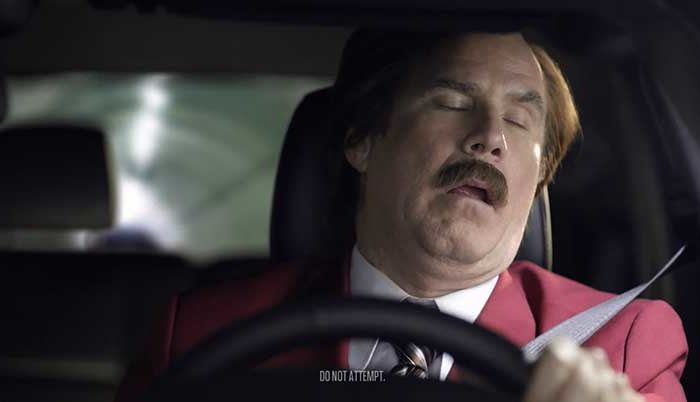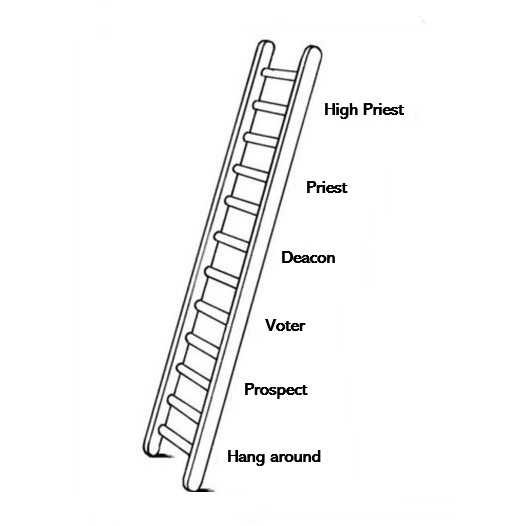 I proud myself of keeping tabs on every tiny detail in the gothic country genre. Apparently, in this case I fell asleep at the wheel. Multi-talented artist Slackeye Slim is recording a new album. How could I miss this? Well, one explanation is that Facebook deleted the original Slackeye Slim page (which I followed). He had to make a new one which at the moment has 46 followers. Sign up! Slackeye Slim also launched a website a while back. Slackeye Slim isn't exactly known for being an avid social media user. I found this information on the website "Howdy! I just launched a new website. Getting ready to record a new album, so I figured it'd be a good idea to have some kinda web presence. The songs are just about done. I don't want to say too much just yet, but I'm really happy with it. I've been working on it on and off for five years or so. I'm hoping to have it out by the end of 2022 or beginning of 2023. I'll keep updating this site as I get time, but just keep an eye out for news from me. And if you don't mind, tell your friends on your social medias and whatnots and what-have-yous. I'm not really into that sort of thing. Slackeye Slim is not promoted or marketed by anyone. Not even by me most of the time. If you like what I'm doing, please spread the word. I'd sure appreciate it. Talk soon." This was most unexpected. The magnificent "Giving My Bones to the Western Lands" was released in 2015, read more here (opens in an new window). After that, dead silence. Slackeye Slim reveals this about the new album: "It's still untitled. However I will say that it's a concept album written from the perspective of a circular firing squad. You figure out what that means. For me, it's about trying to be better than the ones who came before you, and also about realizing how stuck you are to the ones who came before, even if you don't want to be. We'll see what you think. It's the culmination of a lifetime of trouble, sorted out over a bunch of campfires in the desert here in the Four Corners area...I think you're gonna like this one. I've never worked harder or been more honest on a record before this one." This sounds really promising. I'm thrilled and can't wait.
I proud myself of keeping tabs on every tiny detail in the gothic country genre. Apparently, in this case I fell asleep at the wheel. Multi-talented artist Slackeye Slim is recording a new album. How could I miss this? Well, one explanation is that Facebook deleted the original Slackeye Slim page (which I followed). He had to make a new one which at the moment has 46 followers. Sign up! Slackeye Slim also launched a website a while back. Slackeye Slim isn't exactly known for being an avid social media user. I found this information on the website "Howdy! I just launched a new website. Getting ready to record a new album, so I figured it'd be a good idea to have some kinda web presence. The songs are just about done. I don't want to say too much just yet, but I'm really happy with it. I've been working on it on and off for five years or so. I'm hoping to have it out by the end of 2022 or beginning of 2023. I'll keep updating this site as I get time, but just keep an eye out for news from me. And if you don't mind, tell your friends on your social medias and whatnots and what-have-yous. I'm not really into that sort of thing. Slackeye Slim is not promoted or marketed by anyone. Not even by me most of the time. If you like what I'm doing, please spread the word. I'd sure appreciate it. Talk soon." This was most unexpected. The magnificent "Giving My Bones to the Western Lands" was released in 2015, read more here (opens in an new window). After that, dead silence. Slackeye Slim reveals this about the new album: "It's still untitled. However I will say that it's a concept album written from the perspective of a circular firing squad. You figure out what that means. For me, it's about trying to be better than the ones who came before you, and also about realizing how stuck you are to the ones who came before, even if you don't want to be. We'll see what you think. It's the culmination of a lifetime of trouble, sorted out over a bunch of campfires in the desert here in the Four Corners area...I think you're gonna like this one. I've never worked harder or been more honest on a record before this one." This sounds really promising. I'm thrilled and can't wait.

 The saying goes, "Good from far, but far from good". How true. People are not always good looking when you come closer. The same goes for bands and artists who aspire to be the next 16 Horsepower, Handsome Family, Those Poor Bastards, Slim Cessna's Auto Club, Sons of Perdition, Munly & the Lee Lewis Harlots, Reverend Glasseye, Wovenhand, O'Death or Slackeye Slim, read more here (opens in an new window). The aspirants are not good looking. And this goes far beyond their looks. I'm talking about the musical quality and originality. I'm old, tired, and cranky. I want to believe, in the same way people believe in paranormal objects or phenomena, especially the ones alleged to have extraterrestrial origins. I use different trawling techniques. Most fishes pass through my fishing net holes. However, some fishes tagged gothic country, gothic americana, dark americana and southern gothic, get stuck in the net. However, after a brief assessment they are thrown back into the sea. They are either uninteresting or hideous, and sometimes both. Maybe I would be more successful if I focused more on old fishing grounds and the peak period, which ended a decade ago. It's hard work to separate the wheat from the chaff. In fact, it's like finding a needle in a haystack. Adding to the difficulty level. It's unclear if there really is a needle in the haystack.
The saying goes, "Good from far, but far from good". How true. People are not always good looking when you come closer. The same goes for bands and artists who aspire to be the next 16 Horsepower, Handsome Family, Those Poor Bastards, Slim Cessna's Auto Club, Sons of Perdition, Munly & the Lee Lewis Harlots, Reverend Glasseye, Wovenhand, O'Death or Slackeye Slim, read more here (opens in an new window). The aspirants are not good looking. And this goes far beyond their looks. I'm talking about the musical quality and originality. I'm old, tired, and cranky. I want to believe, in the same way people believe in paranormal objects or phenomena, especially the ones alleged to have extraterrestrial origins. I use different trawling techniques. Most fishes pass through my fishing net holes. However, some fishes tagged gothic country, gothic americana, dark americana and southern gothic, get stuck in the net. However, after a brief assessment they are thrown back into the sea. They are either uninteresting or hideous, and sometimes both. Maybe I would be more successful if I focused more on old fishing grounds and the peak period, which ended a decade ago. It's hard work to separate the wheat from the chaff. In fact, it's like finding a needle in a haystack. Adding to the difficulty level. It's unclear if there really is a needle in the haystack.

 Murder ballads are a subgenre of the traditional ballad form dealing with a crime or a gruesome death. Their lyrics form a narrative describing the events of a murder, often including the lead-up and/or aftermath. The term refers to the content, and may be applied to traditional ballads, part of oral culture. Murder ballads are gruesome. The actual murders are secondary. Deception, despair, remorse and punishment are of primary interest. Murder ballads comes in the strangest ways. Take the Everly Brothers for example. Two perfect son-in-laws and pretty-boys singing the darkest of murder ballads, "Down in the Willow Garden". The song may have derived from Irish sources from the early 19th century. Unlike other Irish ballads, "Down in the Willow Garden" was initially restricted to the Appalachian region of the United States. The song title and lyrics vary greatly. The murder of Rose Connolly is brutal. Not once, not twice, but thrice. The protagonist poisons her, stabs her, and throws her body into a river. The motive of this awful crime is stated or assumed pregnancy. The murderer's father had promised him to buy his freedom, but now the father must watch his son's execution. The lyrics are written from the point of view of the murderer. The son laments his death. "My father sits at his cabin door / Wiping his tear-dimmed eyes / For his only son soon shall walk / To yonder scaffold high / My race is run, beneath the sun / The scaffold now waits for me / For I did murder that dear little girl / Whose name was Rose Connolly". The Everly Brothers version of the song is stripped down to the bone. Just two beautiful voices and guitars. Their version was recorded in 1958 and stand the test of time. In fact, it's immortal.
Murder ballads are a subgenre of the traditional ballad form dealing with a crime or a gruesome death. Their lyrics form a narrative describing the events of a murder, often including the lead-up and/or aftermath. The term refers to the content, and may be applied to traditional ballads, part of oral culture. Murder ballads are gruesome. The actual murders are secondary. Deception, despair, remorse and punishment are of primary interest. Murder ballads comes in the strangest ways. Take the Everly Brothers for example. Two perfect son-in-laws and pretty-boys singing the darkest of murder ballads, "Down in the Willow Garden". The song may have derived from Irish sources from the early 19th century. Unlike other Irish ballads, "Down in the Willow Garden" was initially restricted to the Appalachian region of the United States. The song title and lyrics vary greatly. The murder of Rose Connolly is brutal. Not once, not twice, but thrice. The protagonist poisons her, stabs her, and throws her body into a river. The motive of this awful crime is stated or assumed pregnancy. The murderer's father had promised him to buy his freedom, but now the father must watch his son's execution. The lyrics are written from the point of view of the murderer. The son laments his death. "My father sits at his cabin door / Wiping his tear-dimmed eyes / For his only son soon shall walk / To yonder scaffold high / My race is run, beneath the sun / The scaffold now waits for me / For I did murder that dear little girl / Whose name was Rose Connolly". The Everly Brothers version of the song is stripped down to the bone. Just two beautiful voices and guitars. Their version was recorded in 1958 and stand the test of time. In fact, it's immortal.
